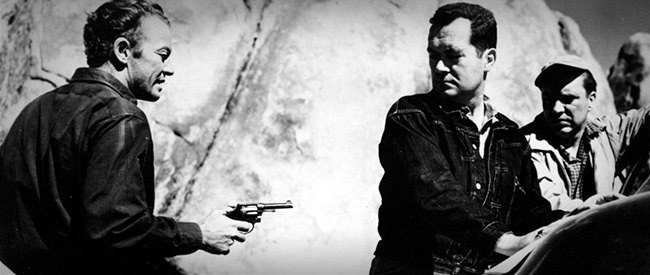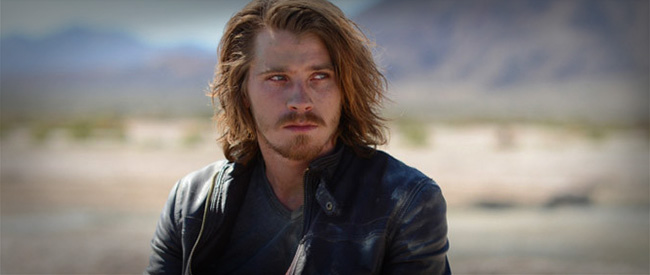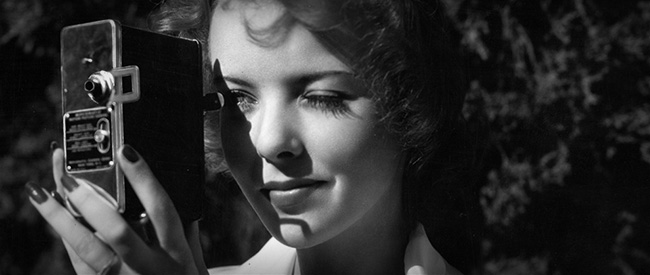Old v. New: The Underlying Protagonist in ‘Mojave’ and ‘The Hitch-Hiker’
In our regular feature Old v. New, Kimberly Marcela Duron compares a newer independent release with an older classic to see what similarities they share, how they diverge and hear what the conversation between the two films has to say about the art of filmmaking as it continues to innovate and evolve.
***
In a modern context, and especially if you’re from the Western US, a trip in the desert could mean one of many things, including some very weird (and possibly R-rated) Coachella and Burning Man stories.
But the 1953 film The Hitch-Hiker is most certainly not one of those stories. In fact, the noir thriller was a significant departure in genre for director Ida Lupino, who had previously worked on four films centered on female characters and social-issue storylines. Written by Lupino and her husband Collier Young, The Hitch-Hiker tells the story of two middle class men who unknowingly pick up a psychopathic killer in the desert on their way to a fishing trip.

Mojave, a 2015 independent film written and directed by Academy Award-winning The Departed screenwriter William Monahan, is also B-movie thriller characterized by a killer antagonist in the desert, though in a modern-day LA setting. Monohan, in fact, narrates his own story, about a burnt-out Hollywood actor who encounters an “intellectual” spree murderer in the titular sun-scorched SoCal badlands.
The two films are set apart by both their plot conventions and formal presentation, as can be expected from films produced 62 years apart. But the characterization of each film’s protagonist and antagonist in relation to power—as well as each film’s curious use of the desert location—reveal these films as remarkably similar.
A shocking opening sequence of murder scenes and lurid headlines sets the tone for The Hitch-Hiker, even before we meet actors Frank Lovejoy and Edmund O’Brien as friends Gilbert and Roy, respectively. The two are ordinary guys just trying to clear their heads out on the road and have some bro-time over fishing. But when “fishing” becomes a detour to Mexicali to have some fun along the US-Mexico border, the hitchhiker appears. William Talman stars as Emmett Myers, who bypasses all social niceties, introducing himself via gunpoint once the two men make the mistake of letting him in their car. The relationship between Myers and the gun is incredibly important, because the weapon is his source of power over the other characters. Without it, he is nothing.
On the other hand, Mojave‘s antagonist is Jack (Oscar Isaac), an outlaw who also bypasses social niceties by inviting himself over to Tom’s campsite for a cup of coffee. Tom, played by Garrett Hedlund, is in a much better position than the fishing duo in The Hitch-Hiker, but still: he’s stuck in the middle of the desert listening to a man with a rifle talk about Jesus and the Devil. The difference is that Jack’s power source is not in his gun—it’s his candor, his wit and his intellect. In fact, once Jack witnesses Tom commit a serious crime in the desert, he doesn’t even need a physical weapon. Even from afar Jack has the ability to stalk, to incite paranoia, and to dangle guilt over Tom’s head.

Whether it’s with a firearm or knowledge of the protagonist’s deepest, darkest secrets, the two killers exploit their victims’ fear and guilt in a twisted power game. At one point in The Hitch-Hiker, Myers gains a moment of sick satisfaction from forcing Gilbert to shoot at a can held in Roy’s hand—inches away from his head. With the clever use of a single POV shot through his friend’s rifle aim, Roy is shrunken down to a sad portrait of hunted prey.
Similarly in Mojave, Jack leaves Tom a note in his own house that says, “What do I know?” in French, along with the missing piece of an incriminating rifle. He is so sure of Tom’s demise that he proclaims, “I’m going to kill you. And you need it. Justice needs to be served.” He’s just as sure as in The Hitch-Hiker when Myers tells the two friends, “You guys are gonna die, that’s all. It’s just a question of when.”
Of course, the ultimate [SPOILER ALERT –ed.] demise of both antagonists is the real question of “When?”—and that’s where the desert comes in. The vast plains of sand, rock formations, and silence make Roy and Gilbert’s plight all the more desperate. There’s nowhere for them to run, even if they tried. Lupino creates a palpable sense of suffocation by focusing most of the shots tight on the three characters with very few establishing shots of the desert—and very few chances for hope. Most of the film takes place inside the car, or at the few pit stops the trio make. Really, if you placed the characters and the story in any other environment, you might not even notice. So why is the desert so important? Because it’s a key witness.
In Mojave, the eponymous desert only makes an appearance at the beginning and at the end of the film—but that’s all we really need. Here, Monahan makes use of the vast barren space through dynamic sequences of stable shots illustrating the passing of time. At night, Tom’s life is disturbed by Jack’s appearances. During the day his life is further disturbed by Jack’s disappearance after witnessing Tom’s crime. Out of the frying pan, into the fire.

Because the desert is a desolate place so far from society, it serves as a silent witness to the psychological games and crimes committed at the hands of each film’s killers. However, the desert is also a place of closure for the victims, who want what happens in the desert to stay in the desert. Both films resolve the antagonists’ crimes by stripping the bad guys’ of their power source. The Hitch-Hiker, in a riveting climax without any music score, shows Myers being stripped of his gun at the hands of the police. Tom, on the other hand, takes justice into his own hands, showing Jack no mercy, with a score that makes it seem like everything is happening at once.
But regardless of their moral compass, the “hunted’ in both of these thrillers manage to escape what Jack himself defines as “motiveless malignancy”. Watching these two Hitchcockian films back-to-back illustrates the evolution of what, over time, filmmakers are able to reveal to their audience while simultaneously making clear that stories of human fear, instinct, power, control and the occasional ill-fated detour have always been timeless.
To learn more about Film Independent, subscribe to our YouTube channel. You can catch up with the rest of our blog here. And to learn how to become of Member of Film Independent, just click here.